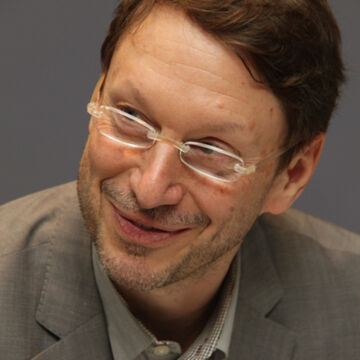

James Elkins
Professor
Contact
Bio
E. C. Chadbourne Professor of Art History, Theory, and Criticism (1989). BA, cum laude, 1977, Cornell University; MFA and MA, 1983, and PhD with honors, 1989, University of Chicago. Books: Pictures and Tears: A History of People Who Have Cried in Front of Paintings; Chinese Landscape Painting as Western Art History; Our Beautiful, Dry, and Distant Texts: Art History as Writing; Pictures of the Body: Pain and Metamorphosis; The Domain of Images; How to Use Your Eyes; What Painting Is; The Poetics of Perspective; The Object Stares Back: On the Nature of Seeing; Nationalism, Design, and the Ideology of Engineering: Images of the Bulgarian Repeating Rifle; Why are our Pictures Puzzles? On the Modern Origins of Pictorial Complexity; On Pictures and the Words That Fail Them; What Happened to Art Criticism?; Six Stories from the End of Representation: Images in Painting, Photography, Microscopy, Astronomy, Particle Physics, and Quantum Mechanics, 1985-2000; Visual Studies: A Skeptical Introduction; The Sense of the Infinite on the Western Shore of Lake Victoria Nyanza; Why Art Cannot Be Taught: A Handbook for Art Students; You Rock My World: An Illustrated History of the Rocking Chair, Rocking Cradle, and Rocking Hammock, 1854-1923; Master Narratives and their Discontents; What Photography Is; Art Critiques: A Guide; Visual Worlds (with Erna Fiorentini); The End of Diversity in Art Historical Writing: North Atlantic Art History and Its Alternatives; and 22 edited books.
Personal Statement
James Elkins grew up in Ithaca, New York, separated from Cornell University by a quarter-mile of woods once owned by the naturalist Laurence Palmer. He stayed on in Ithaca long enough to get the BA degree, with summer hitchhiking trips to Alaska, Mexico, Guatemala, the Caribbean, and Columbia. He got a graduate degree in painting, and then switched to Art History, got another graduate degree, and went on to do the PhD in Art History, which he finished in 1989. (All from the University of Chicago.) In 1994 he married Margaret MacNamidhe on Inishmore, one of the Aran Islands, off the West coast of Ireland. (Margaret is also in the Art History department.) His interests include microscopy (with a Zeiss Nomarski differential interference microscope and Anoptral phase contrast), stereo photography (with a Realist camera), playing piano (contemporary classical music), and (whenever possible) winter ocean diving.